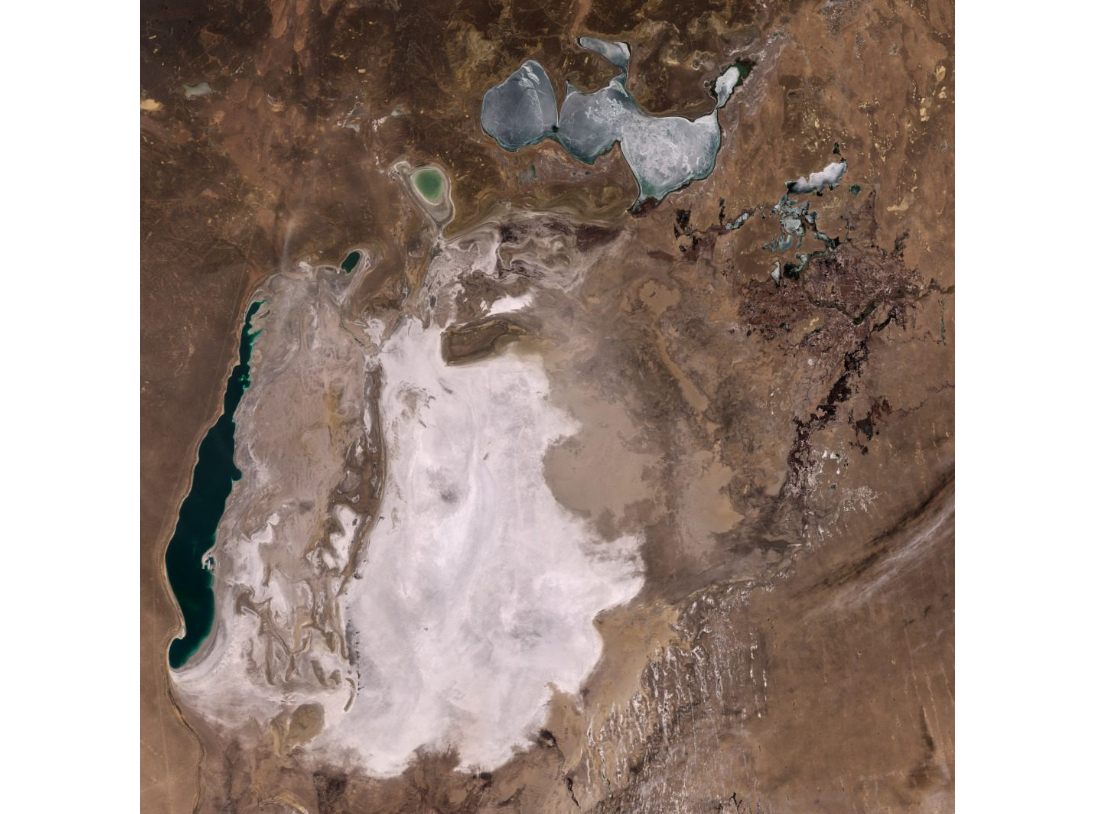Until the 1960s, the Aral Sea was one of the largest inland reservoirs of water in the world. Over seven decades, the lake first split into smaller lakes, until most of its original surface had completely evaporated, leaving behind a desert.
The Aral Sea used to cover an area of 68,000 square kilometers (26,300 square miles). Today, it would be considered the third-largest lake by surface area after the Caspian Sea and Lake Superior. The actual third-largest lake – Lake Victoria – has also changed in size over the last several decades, but absolutely not as much as the Aral Sea, whose residual lakes cover less than 10 percent of the original surface.
The sea now sits at the border between Kazakhstan and Uzbekistan, but to understand how it reached its current form, we need to cast our imagination back to the Soviet era. Back then, the Aral Sea’s two main sources of fresh water were the Syr Darya and the Amu Darya, rivers that fed the salt lake with fresh water and maintained this basin in a mostly arid region.
During the 1960s, the rivers began to be used more and more for irrigation, decreasing the flow of water into the lake, and leading to a significant reduction in its size. By the time the 1980s ended, the lake had already split in two. The Large Aral was located in the south, still on the border, and the Small Aral was now completely in Kazakhstan.
The situation continued to deteriorate. Another two decades and the Large Aral had split once again into two: an eastern lobe and a western lobe. Today, the eastern lobe has since vanished, leaving behind a salty arid area, the Aralkum Desert: Earth’s youngest desert. Satellite images of the new terrain are quite striking.

The Small Aral is frozen in the north, while the only thing that remains of the Large Aral is a thin strip of the western lobe.
Image Credit: Contains modified Copernicus Sentinel data (2025), processed by ESA
What happens when a massive lake turns into a desert? Well, problems! The lake had a thriving fishing industry that has now vanished. The region’s microclimate has been completely altered: the winters are colder, the summers are hotter, and every year, violent sandstorms spread the sand and salt across hundreds of kilometers, affecting the health of the local population.
The whole southern section is expected to dry up soon, while for the last two decades, international efforts have tried to preserve the Small Aral. The Kok-Aral dike was built to stabilize the flow of Syr Darya, and over the last 20 years, the level of the water in the Small Aral has grown by 4 meters (13 feet).
Source Link: How Did One Of The World’s Largest Lakes Turn Into The World’s Youngest Desert?